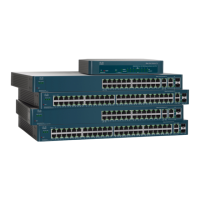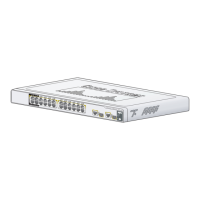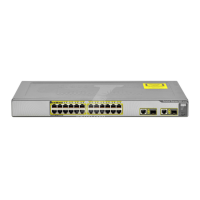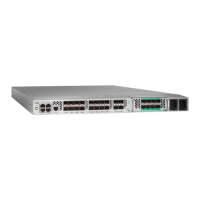Administration: Discovery
Configuring LLDP
Cisco 500 Series Stackable Managed Switch Administration Guide 160
9
Network Policy Table
• Application Type—Network policy application type; for example, Voice.
• VLAN ID—VLAN ID for which the network policy is defined.
• VLAN Type—VLAN type for which the network policy is defined. The
possible field values are:
-
Tagged
—Indicates the network policy is defined for tagged VLANs.
-
Untagged
—Indicates the network policy is defined for untagged VLANs.
• User Priority—Network policy user priority.
• DSCP—Network policy DSCP.
STEP 3 On the bottom of the page, click LLDP Port Status Table to see the details in the
LLDP Port Status Table.
LLDP Neighbor Information
The LLDP Neighbor Information page contains information that was received from
neighboring devices.
After timeout (based on the value received from the neighbor Time To Live TLV
during which no LLDP PDU was received from a neighbor), the information is
deleted.
To view the LLDP neighbors information:
STEP 1 Click Administration > Discovery - LLDP > LLDP Neighbor Information.
STEP 2 Select the interface for which LLDP neighbor information is to be displayed.
This page displays the following fields for the selected interface:
• Local Port—Number of the local port to which the neighbor is connected.
• Chassis ID Subtype—Type of chassis ID (for example, MAC address).
• Chassis ID—Identifier of the 802 LAN neighboring device's chassis.
• Port ID Subtype—Type of the port identifier that is shown.
• Port ID—Identifier of port.
